22 Bizarre Beauty Standards Throughout History And Cultures
Throughout the world and history, the standards for beauty and attraction vary greatly.
- List View
- Player View
- Grid View
Advertisement
-
1.
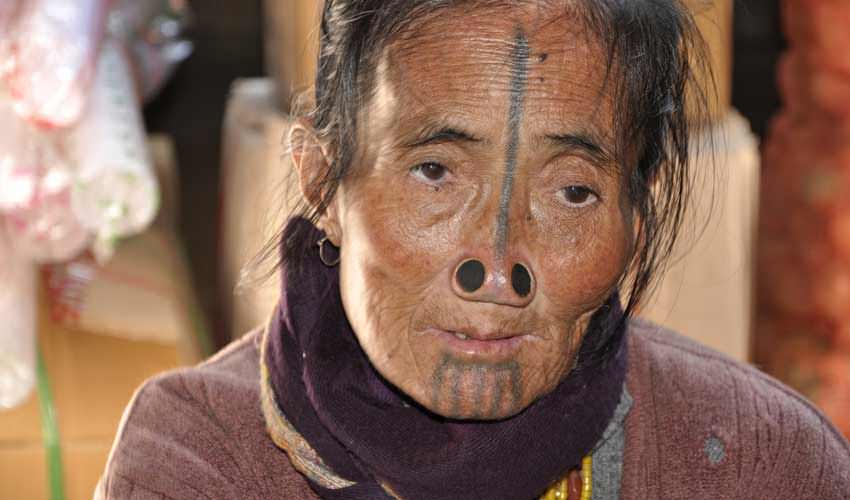 Women of the Apatani tribe living in the Ziro valley, Arunachal Pradesh used to have wooden plugs lodged in the sides of their noses as a rite of passage. However, instead of adding to their beauty, the practice was initiated to make them uglier. Officially abolished in 1970, it was historically started to deter tribal raiders from kidnapping and taking away the beautiful women of the tribe.
Women of the Apatani tribe living in the Ziro valley, Arunachal Pradesh used to have wooden plugs lodged in the sides of their noses as a rite of passage. However, instead of adding to their beauty, the practice was initiated to make them uglier. Officially abolished in 1970, it was historically started to deter tribal raiders from kidnapping and taking away the beautiful women of the tribe. -
2.
 In Kayan culture of Burma, long, graceful necks are considered as symbols of beauty and elegance. Women belonging to this ancient culture wear multiple brass rings coiled around the neck from a very young age and the number of rings increase as the woman grows older. These women can wear up to 20 pounds of rings when they are adults.
In Kayan culture of Burma, long, graceful necks are considered as symbols of beauty and elegance. Women belonging to this ancient culture wear multiple brass rings coiled around the neck from a very young age and the number of rings increase as the woman grows older. These women can wear up to 20 pounds of rings when they are adults. -
3.
 In some Asian cultures, crooked or fang-like teeth are popular. Some young girls even buy fake crooked teeth.
In some Asian cultures, crooked or fang-like teeth are popular. Some young girls even buy fake crooked teeth. -
4.
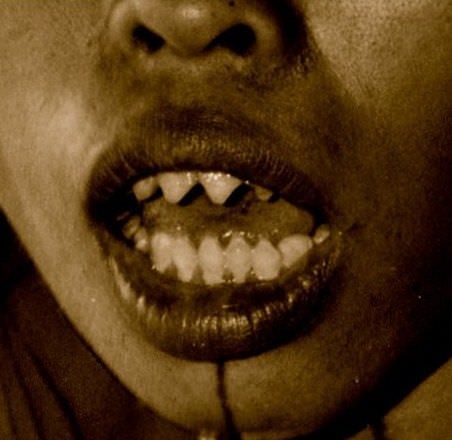 A somewhat common practice across cultures that practice cannibalism is filing one's teeth to make them like those of a vicious predator. This is typically done only when the cannibalism has reached a certain level so as to make it a not uncommon element in the person's diet.
A somewhat common practice across cultures that practice cannibalism is filing one's teeth to make them like those of a vicious predator. This is typically done only when the cannibalism has reached a certain level so as to make it a not uncommon element in the person's diet. -
5.
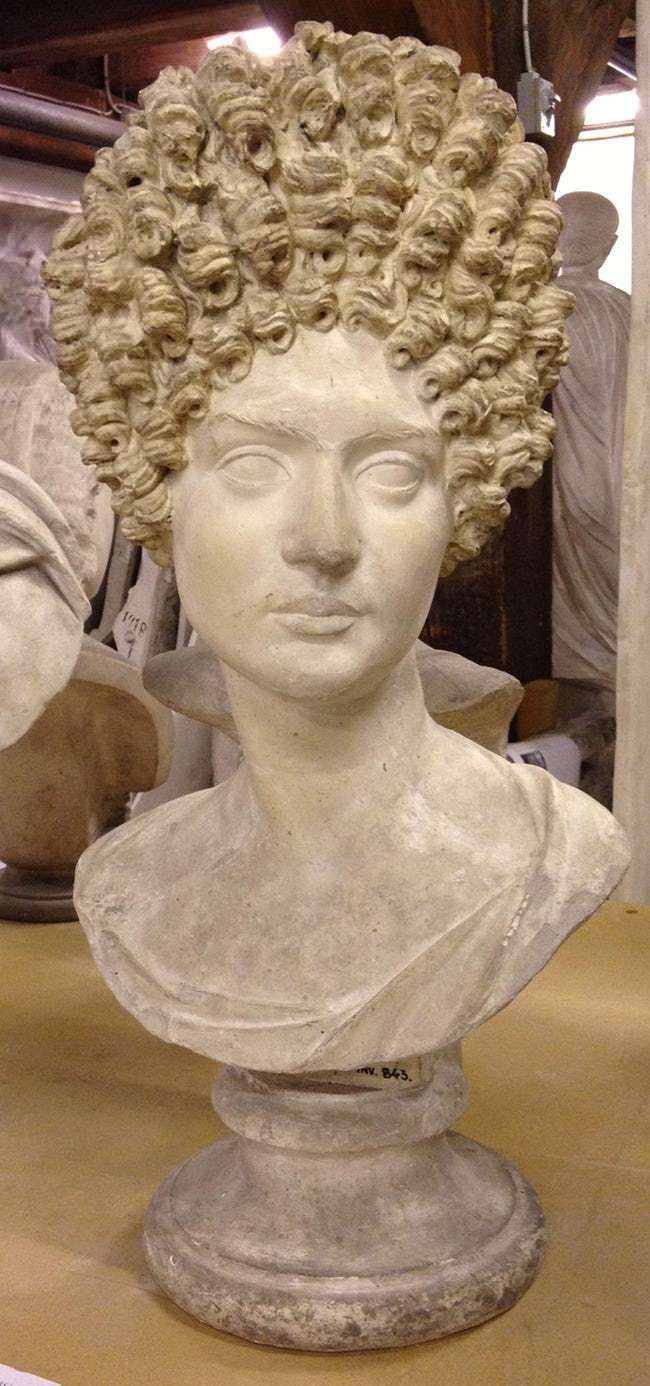 The Greeks had a very different idea of "power brows." In Ancient Greece, women's unibrows were considered a sign of intelligence and purity. If they didn't have one naturally, women would use kohl pigment to draw one on.
The Greeks had a very different idea of "power brows." In Ancient Greece, women's unibrows were considered a sign of intelligence and purity. If they didn't have one naturally, women would use kohl pigment to draw one on. -
6.
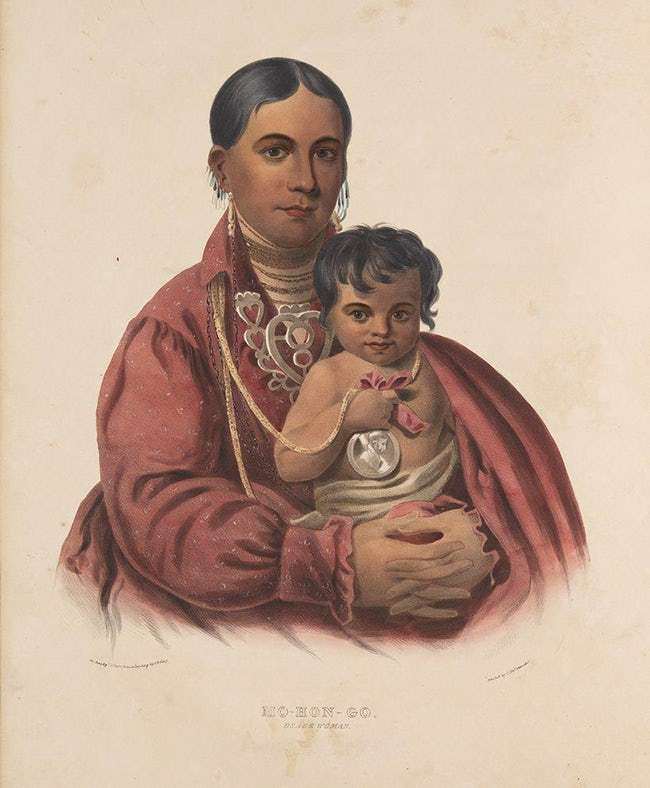 When colonialists arrived in the Americas, they were shocked by a painful beauty standard for native women: plucking off all of their pubic hair. Thomas Jefferson said of this foreign tradition that "with them it is disgraceful to be hairy in the body. They say it likens them to hogs. They therefore pluck the hair as fast as it appears." When it's put like that, I guess it might be worth the trouble.
When colonialists arrived in the Americas, they were shocked by a painful beauty standard for native women: plucking off all of their pubic hair. Thomas Jefferson said of this foreign tradition that "with them it is disgraceful to be hairy in the body. They say it likens them to hogs. They therefore pluck the hair as fast as it appears." When it's put like that, I guess it might be worth the trouble. -
7.
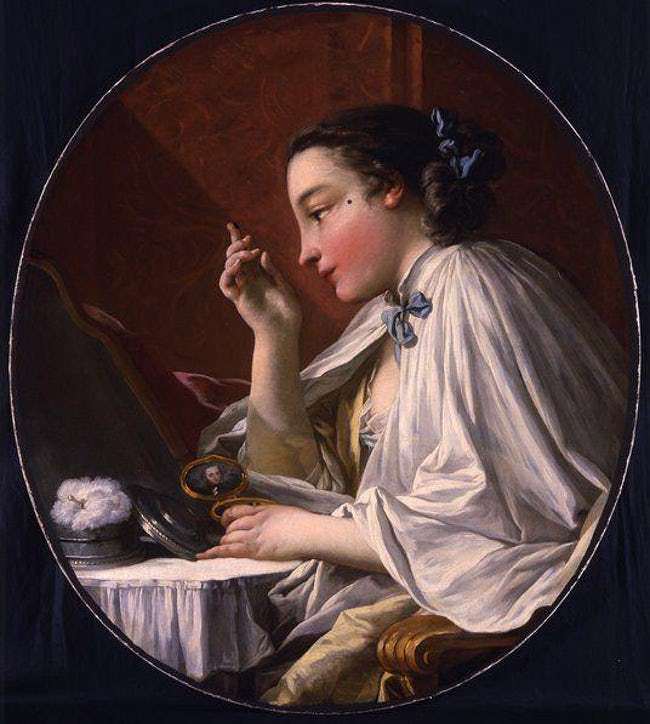 In the 18th century, the previous standard of bare-faced women disappeared, and women began wearing heavy makeup. They also started wearing beauty patches, small pieces of fabric that were adhered to the face. They came in many shapes, such as stars, circles, and squares, and their placement on the face had specific meaning. For example, one by the mouth implied flirtatiousness, and one on the right cheek meant that the woman was married.
In the 18th century, the previous standard of bare-faced women disappeared, and women began wearing heavy makeup. They also started wearing beauty patches, small pieces of fabric that were adhered to the face. They came in many shapes, such as stars, circles, and squares, and their placement on the face had specific meaning. For example, one by the mouth implied flirtatiousness, and one on the right cheek meant that the woman was married. -
8.
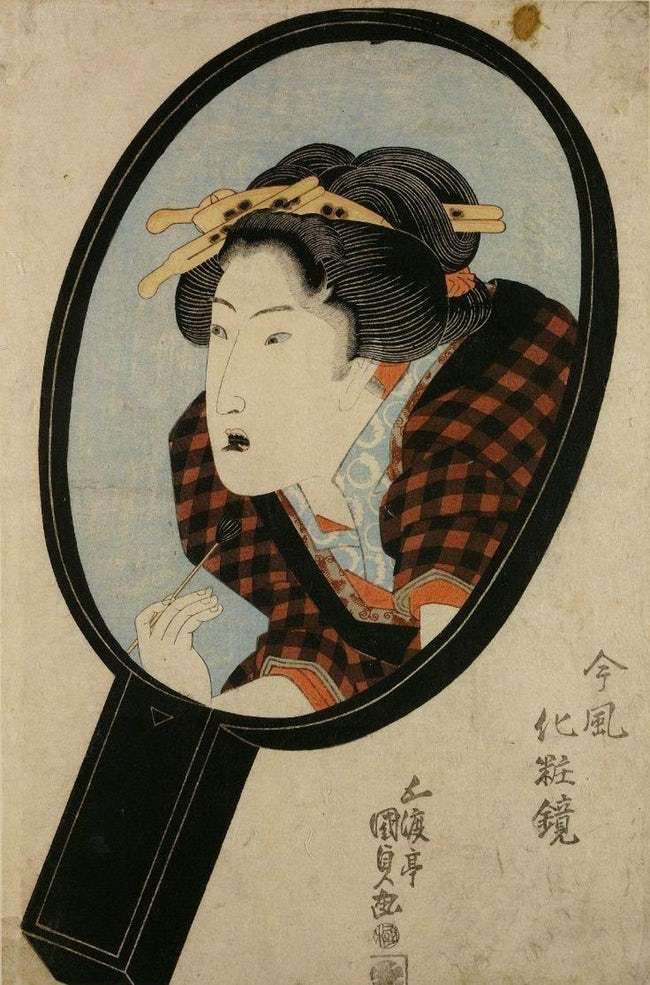 For thousands of years, Japanese women would blacken their teeth permanently after marriage. This continued through the 19th century, and was a symbol of beauty and marital commitment.
For thousands of years, Japanese women would blacken their teeth permanently after marriage. This continued through the 19th century, and was a symbol of beauty and marital commitment. -
9.
 For European women during the Middle Ages and the Renaissance, the plucking did not stop at the forehead. Eyelashes became symbols of oversexuality, and the fresh face was in. Thus, women of means would often remove their eyelashes entirely, which sounds way too painful to begin thinking about.
For European women during the Middle Ages and the Renaissance, the plucking did not stop at the forehead. Eyelashes became symbols of oversexuality, and the fresh face was in. Thus, women of means would often remove their eyelashes entirely, which sounds way too painful to begin thinking about. -
10.
 If you've ever looked at Renaissance paintings and wondered why the women seem to look so strange, it's not just you. Large, curved foreheads were an important indicator of beauty, and women would pluck or shave their hairlines to increase the size of their forehead. Basically, creating a receding hairline on purpose.
If you've ever looked at Renaissance paintings and wondered why the women seem to look so strange, it's not just you. Large, curved foreheads were an important indicator of beauty, and women would pluck or shave their hairlines to increase the size of their forehead. Basically, creating a receding hairline on purpose. -
11.
 Women in Mauritania are lauded for gaining weight as super-sized bodies are considered extremely beautiful. Sending young girls to ‘fat camps’, where they are fed up to 15,000 calories a day, is the norm because being bigger in size makes women more desirable as wives.
Women in Mauritania are lauded for gaining weight as super-sized bodies are considered extremely beautiful. Sending young girls to ‘fat camps’, where they are fed up to 15,000 calories a day, is the norm because being bigger in size makes women more desirable as wives. -
12.
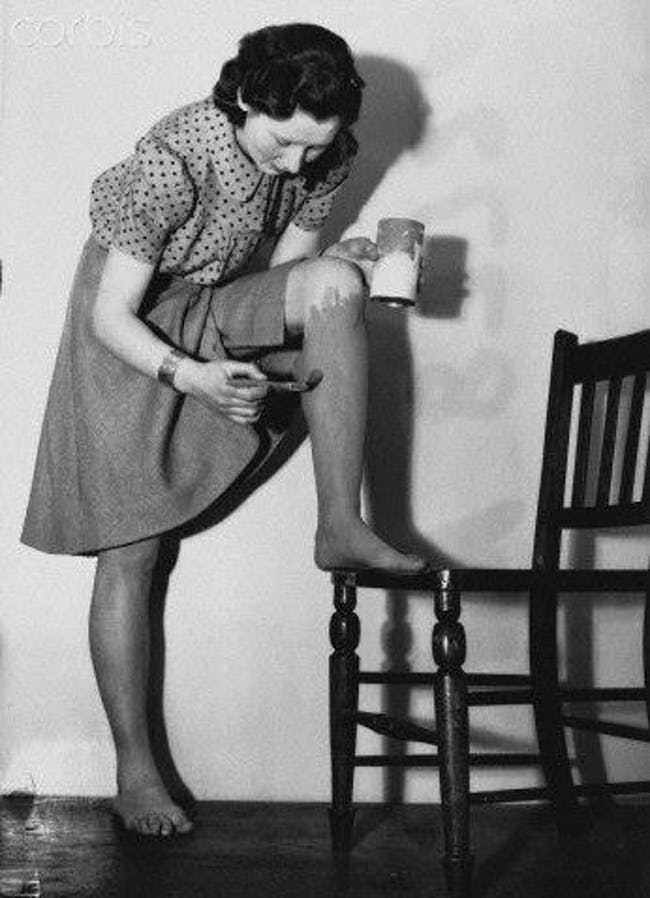 Thanks to nylon shortages during the second World War, women's pantyhose were lacking. However, the tan appearance of stockinged legs was still considered necessary, so dozens of paint products meant to mimic the look of nylon hit the market. According to a 1942 edition of LIFE Magazine, "When they are properly applied the most scrutinizing pair of masculine eyes cannot distinguish between legs thus covered and legs in sheer hose." However, some women would just go for what was around and use gravy to paint their legs to get that stunning nylon look.
Thanks to nylon shortages during the second World War, women's pantyhose were lacking. However, the tan appearance of stockinged legs was still considered necessary, so dozens of paint products meant to mimic the look of nylon hit the market. According to a 1942 edition of LIFE Magazine, "When they are properly applied the most scrutinizing pair of masculine eyes cannot distinguish between legs thus covered and legs in sheer hose." However, some women would just go for what was around and use gravy to paint their legs to get that stunning nylon look. -
13.
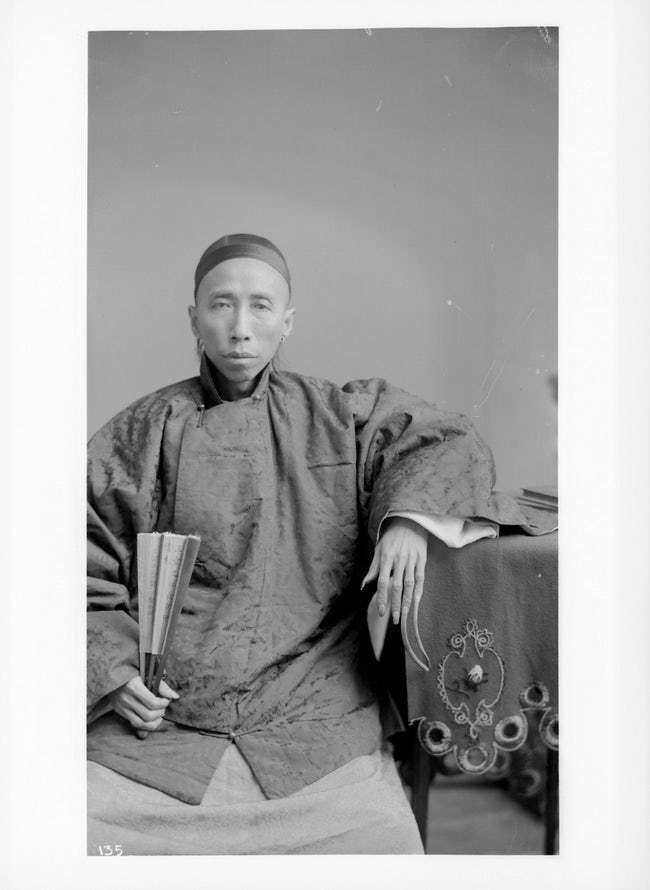 The Chinese have a long history of long nails. Both men and women of the Qing Dynasty grew nails that were 8 to 10 inches long, and some women wore gold nail-guards in order to protect their rather inconvenient manicures. This was to indicate that they were wealthy enough that they didn't need to labor with their hands. Instead, they had to rely on servants to do things like dress or feed them.
The Chinese have a long history of long nails. Both men and women of the Qing Dynasty grew nails that were 8 to 10 inches long, and some women wore gold nail-guards in order to protect their rather inconvenient manicures. This was to indicate that they were wealthy enough that they didn't need to labor with their hands. Instead, they had to rely on servants to do things like dress or feed them. -
14.
 Iran is famous as the nose job capital of the world. Women in Iran undergo rhinoplasty surgery with pride, and the post-surgical bandages are worn as a status symbol. Sometimes, women wear them longer than needed or even opt for fake bandages without having the surgery done.
Iran is famous as the nose job capital of the world. Women in Iran undergo rhinoplasty surgery with pride, and the post-surgical bandages are worn as a status symbol. Sometimes, women wear them longer than needed or even opt for fake bandages without having the surgery done. -
15.
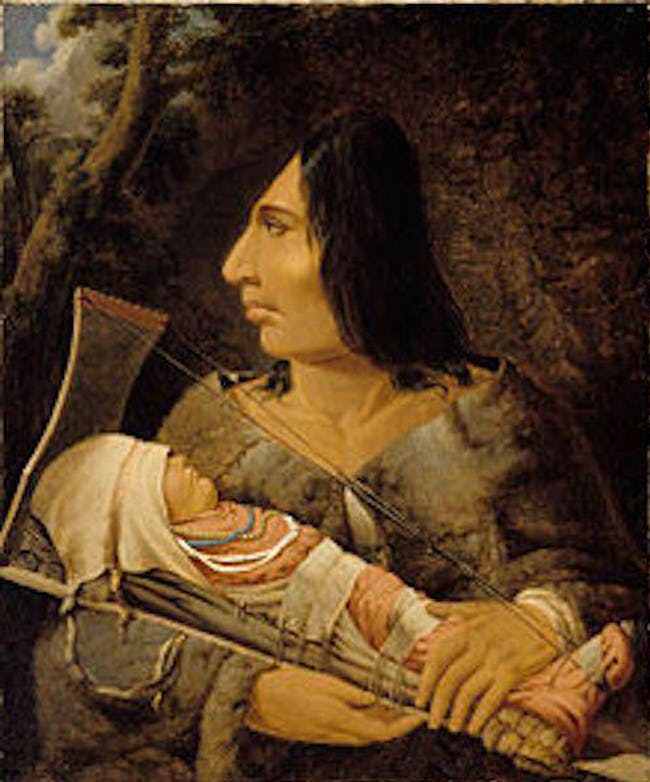 Starting around 1000 BC, the ancient Maya started modifying the skulls of their infants. A child's head was kept strapped to a board or bound with various implements, forcing the skull to become malformed. This was done to both males and females, and it is believed to not have been related to social standing, but a sign of ornamental beauty. Many other groups all over the world had similar practices, including the Germanic tribes like the Huns, Hawaiians, Tahitians, Incas, and the Chinook and Choctaw tribes in North America.
Starting around 1000 BC, the ancient Maya started modifying the skulls of their infants. A child's head was kept strapped to a board or bound with various implements, forcing the skull to become malformed. This was done to both males and females, and it is believed to not have been related to social standing, but a sign of ornamental beauty. Many other groups all over the world had similar practices, including the Germanic tribes like the Huns, Hawaiians, Tahitians, Incas, and the Chinook and Choctaw tribes in North America. -
16.
 Women's legs are highly admired these days, but back in the Middle Ages and well through the 18th century, men's calves were what it was all about. Men wore stockings like women in order to show off their well-shaped calves, and some even wore padding inside their stockings to improve their unsatisfactory gams. King Henry VIII, for example, was renowned for his excellent calves.
Women's legs are highly admired these days, but back in the Middle Ages and well through the 18th century, men's calves were what it was all about. Men wore stockings like women in order to show off their well-shaped calves, and some even wore padding inside their stockings to improve their unsatisfactory gams. King Henry VIII, for example, was renowned for his excellent calves. -
17.
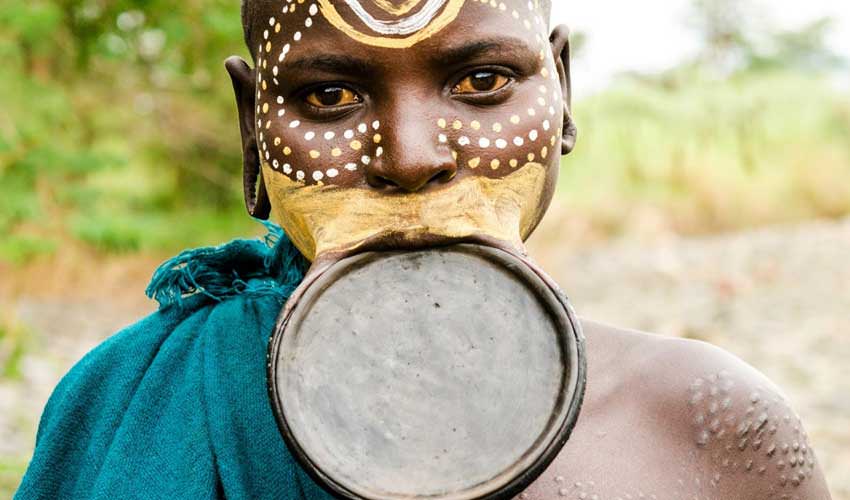 Worn in the lower lip, the clay lip plate is the defining image of women across the Mursi and Surma tribes in Africa. As soon as the girls of the community hit puberty, their two lower front teeth are removed and a hole is pierced in the bottom lip that is then stretched out to accommodate the lip plate. The size of the lip plate gradually increases over the years, as they believe that larger the plate and lip, the more beautiful the woman is.
Worn in the lower lip, the clay lip plate is the defining image of women across the Mursi and Surma tribes in Africa. As soon as the girls of the community hit puberty, their two lower front teeth are removed and a hole is pierced in the bottom lip that is then stretched out to accommodate the lip plate. The size of the lip plate gradually increases over the years, as they believe that larger the plate and lip, the more beautiful the woman is. -
18.
 The Maori are known for their face tattoos.
The Maori are known for their face tattoos. -
19.
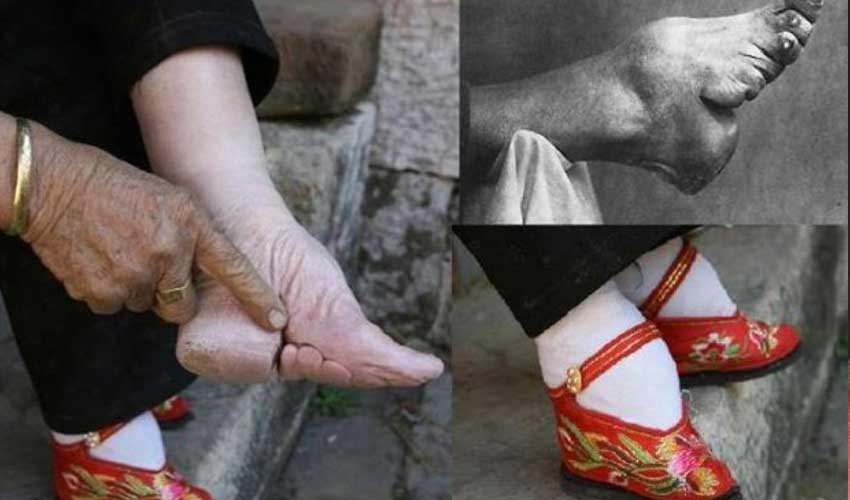 The ancient Chinese practice of foot-binding, believed to have started around the 10th century, has long been abolished. However, there was a time when Chinese women underwent this painful practice to remould the bones of their feet into the customary size of three to five inches, by binding them. These ‘lotus feet’ were believed to be the beautiful symbols of status and wealth in society.
The ancient Chinese practice of foot-binding, believed to have started around the 10th century, has long been abolished. However, there was a time when Chinese women underwent this painful practice to remould the bones of their feet into the customary size of three to five inches, by binding them. These ‘lotus feet’ were believed to be the beautiful symbols of status and wealth in society. -
20.
 The Masai tribe started the practice of ear stretching to alter their appearance and look more beautiful. However, cultures and tribes across the world now practise this art for various reasons, including physical beauty, religion, coming of age ceremonies and even warding off evil. It is a common among women even today in many tribes across Africa, Southeast-Asia and South America (the Amazon Basin).
The Masai tribe started the practice of ear stretching to alter their appearance and look more beautiful. However, cultures and tribes across the world now practise this art for various reasons, including physical beauty, religion, coming of age ceremonies and even warding off evil. It is a common among women even today in many tribes across Africa, Southeast-Asia and South America (the Amazon Basin). -
21.
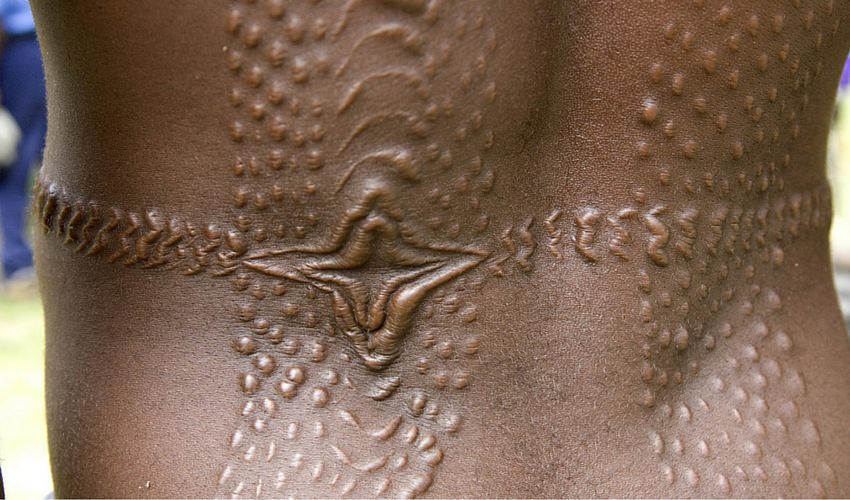 In Ethiopia and Sudan, intricate body scars that form multiple designs are a symbol of beauty, for both men and women. Those who take part in this practice undergo excruciating pain to look beautiful with facial scarification and scar patterns all over the body. The ritual includes usage of thorns and a razor for the scars, and organic sap or ash rubbed in to make them heal into the raised designs we see.
In Ethiopia and Sudan, intricate body scars that form multiple designs are a symbol of beauty, for both men and women. Those who take part in this practice undergo excruciating pain to look beautiful with facial scarification and scar patterns all over the body. The ritual includes usage of thorns and a razor for the scars, and organic sap or ash rubbed in to make them heal into the raised designs we see. -
22.
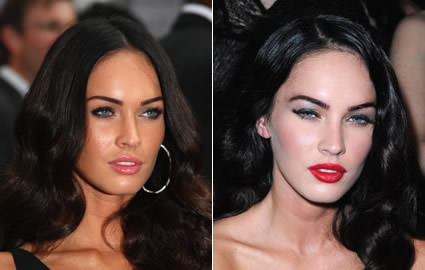 Before the Industrial Revolution, pale skin was usually considered the standard of beauty in European cultures. After the Revolution, however, it was tan skin. In both cases, the association was with wealth. Prior to industrialization, pale skin was evidence of a life of luxury; instead of working in the fields, you were able to lounge in the shade or under a roof all day. After industrialization, this reversed. Now pale skin was the mark of the underclasses, who worked in factories all day, while tan skin evinced the luxury of being able to stroll about outdoors.
Before the Industrial Revolution, pale skin was usually considered the standard of beauty in European cultures. After the Revolution, however, it was tan skin. In both cases, the association was with wealth. Prior to industrialization, pale skin was evidence of a life of luxury; instead of working in the fields, you were able to lounge in the shade or under a roof all day. After industrialization, this reversed. Now pale skin was the mark of the underclasses, who worked in factories all day, while tan skin evinced the luxury of being able to stroll about outdoors.
- REPLAY GALLERY
-
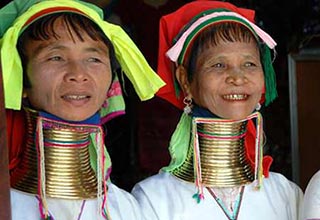
- 22 Bizarre Beauty Standards Throughout History And Cultures
- NEXT GALLERY
-

- 12 Facts That Will Give You A Look Inside the CIA
Women of the Apatani tribe living in the Ziro valley, Arunachal Pradesh used to have wooden plugs lodged in the sides of their noses as a rite of passage. However, instead of adding to their beauty, the practice was initiated to make them uglier. Officially abolished in 1970, it was historically started to deter tribal raiders from kidnapping and taking away the beautiful women of the tribe.
22/22
1/22
Categories:
Wow


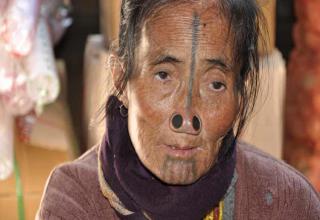
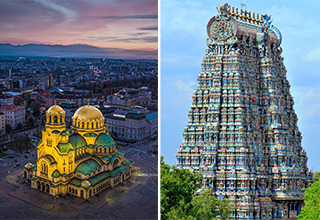




7 Comments